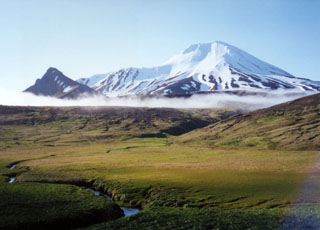Report on Little Sitkin (United States) — 13 July-19 July 2022
Smithsonian Institution / US Geological Survey
Weekly Volcanic Activity Report, 13 July-19 July 2022
Managing Editor: Sally Sennert.
Please cite this report as:
Global Volcanism Program, 2022. Report on Little Sitkin (United States) (Sennert, S, ed.). Weekly Volcanic Activity Report, 13 July-19 July 2022. Smithsonian Institution and US Geological Survey.
Little Sitkin
United States
51.95°N, 178.543°E; summit elev. 1174 m
All times are local (unless otherwise noted)
On 14 July AVO moved the Aviation Color Code for Little Sitkin to Green and the Volcano Alert Level from Unassigned to Normal because an upgraded communication link to installed instruments allowed better monitoring of unrest. The volcano is monitored using local seismic and infrasound sensors, satellite data, web cameras, and remote infrasound and lightning networks.
Geological Summary. Diamond-shaped Little Sitkin Island is bounded by steep cliffs on the east, north, and NE sides. Little Sitkin volcano contains two nested calderas. The older, nearly circular Pleistocene caldera is 4.8 km wide, may have once contained a caldera lake, and was partially filled by a younger cone formed mostly of andesitic and dacitic lava flows. The elliptical younger caldera is 2.7 x 4 km wide; it lies within the eastern part of the older caldera and shares its eastern and southern rim. The younger caldera partially destroyed the lava cone within the first caldera and is of possible early Holocene age. Young-looking dacitic lava flows, erupted in 1828 (Kay, in Wood and Kienle 1990), issued from the central cone within the younger caldera and from a vent on the west flank outside the older caldera. Fumarolic areas are found near the western coast, along the NW margin of the older caldera, and from the summit crater down the southern flank for a 1 km distance.
Source: US Geological Survey Alaska Volcano Observatory (AVO)

